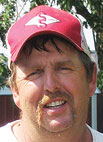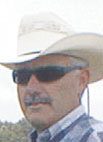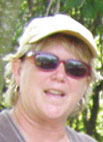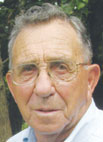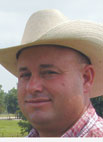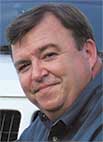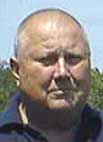Corn is Energy
Corn is energy. Corn silage and earlage is the cheapest source of energy for either beef or dairy cattle.” Matthew Lamb has put this belief into practice by raising about 180 acres of corn to be harvested for both silage and earlage on his Webster County farm near Seymour, Mo.
Top Quality For Meat and Show
Owned and operated by Pat and Clark Cotten and son Elliott, Bending Tree Ranch is located near Damascus, Ark. The 20 acres of rough/wooded land they own offers good browse/forage for their animals. They also utilize another 40 acres for the animals’ browsing. In addition to breeding and raising both registered and commercial stock, she also breeds and sells show wethers. Dominique, a Market show wether, bred by Pat, won 1st place at the Arkansas state fair in 2007, and came in 5th in Over-All Grand Drive. They sell breeding stock nation-wide as well as sell some slaughter stock each year.
Carrying on the Tradition
Born and raised in Gentry, Ark., Larry Curran grew up going to the feed store his family ran for fun. The Curran family had bought the store in 1946. It's been run by the same family ever since. Larry started working at the feed store when he was in high school. Larry’s brothers and sister would eat every meal at the table together while growing up and are still close to this day. Larry said he feels blessed to have been able to work in and run the feed store for the last 36 years. Today, Larry and his wife of over 30 years, Lou Ann, have feed stores in Gentry and Elm Springs, Ark., and all Larry’s children live close by.
Kids on Calves and Calves on Grass
As Madison County residents gear up for the county fair this September, there will be a familiar sight on the sidelines of the showmanship ring: Jeff Williams instructing a child on how to handle an animal in order to win.
Maines Make More
"I never knew I was an outdoors-type person,” Jamie Haase said, smiling from the seat of her beat-up Ford farm truck. After years in the Extension office in McDonald County, Jamie realized that a full-time job at the farm was the ideal place for her.
Faith, Farming and the Family Business
It’s been a balance between a life called to ministry, a business in buildings and construction and a love-affair with the family farm that’s kept John Wilkins busy all his years.
Marketing LimFlex
Limousin cattle are the focus of Pinegar Limousin. Make no mistake about that. But when it comes to improving the breed, Ty Heavin, ranch manager at Pinegar is quick to point out the advantages and benefits of the increasingly popular LimFlex. LimFlex can be a cross between anywhere from a 75 percent Limousin and a 25 percent Angus to 25 percent Limousin and 75 percent Angus.
Building a Purebred Herd
In the middle of the second cutting and baling at the end of July, D.A. Dahlke worked hard to get his hay in before another rain. He partners with his brother, Doin; they bale hay from 40 acres, with half belonging to D.A., about 150 round bales each year.
Improving Efficiency
Cattle are in Lawson Hembree's blood. Actively ranching for the last 15 years, Lawson is the sixth generation of his family to raise cattle on the same plot of land near Ozark, Ark., since before Arkansas was a state.
The City’s Beef Farm
Chastain Farms is the classical depiction of how cattle farmers have evolved the past 80 years from expansive pasture-based operations focused on natural selection to small-scale farms focused on introducing technology to create high-quality cattle.

